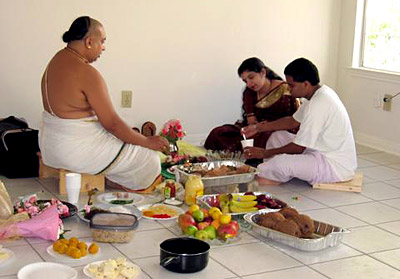 There are several guidelines for Entering a New House as per Vastu Shastra. Vastu is an ancient science of architecture and design. A person`s home is his abode of warmth, love and relaxation. The principles of Vastu help in attaining peace, happiness, success, prosperity and overall development. The ritual of Griha Pravesh should be performed before entering a new house along with another ceremony known as Vaastu Shanti. It is also suggested that Navagraha Puja, Ganesha Puja and Puja for the Vastu Purusha should also be performed. The principles for Entering a New House as per Vastu Shastra is mentioned below-
There are several guidelines for Entering a New House as per Vastu Shastra. Vastu is an ancient science of architecture and design. A person`s home is his abode of warmth, love and relaxation. The principles of Vastu help in attaining peace, happiness, success, prosperity and overall development. The ritual of Griha Pravesh should be performed before entering a new house along with another ceremony known as Vaastu Shanti. It is also suggested that Navagraha Puja, Ganesha Puja and Puja for the Vastu Purusha should also be performed. The principles for Entering a New House as per Vastu Shastra is mentioned below-
* The house warming ceremony or the Griha Pravesh should be performed whenever a new building is built.
* When the sun is moving northwards from the tropic of Capricorn, it is the best time for entering into a new house. Normally, this period is from June 21 to December 20, and known as Uttarayan. In the Uttaryan, when the sun moves from east to west, it goes from the north direction. In the northward movement of the sun, the auspicious sunrays are available in a large measure in the east and the north direction.
* When the sun is in the Uttara, Magha, Pushya, Ashwini, Revati and Swati constellations in the months of Vaishakh, Shravan or Margashirsh at an auspicious moment, the propitiation ceremony should be preformed and then on the auspicious day the Grihapravesh entry in to new house should take place.
* Ganesh Puja, Navagraha Shanti, which means worship of the nine planets, and the worship of Vastu Pratima that is the image of the building deity, should be performed.
* The image of Vastu Purush, silver cobra, copper wire, pearls and corals etc. should be taken in a small earthen pot and some moss should be put on it. The faces of the Vastudevta and the Cobra should be in the east. This pot should be buried in the main southeast corner of the building. It is necessary that the mouth of the pot be covered with a lid.
* At the time of Vastushanti Balibhog, Food, Rice, Curd, Flour Lamps etc. should be given. This Balibhog or offering should be kept at a place where four roads meet. Then without looking back someone should enter the building after properly washing the hands and feet.
* The owner of the house should take at least one round of the building after Vastupujan. Female members of the family should take one round of the plot with water pots on their heads or shoulders. They should drop sweet smelling flowers while taking this round.
* While entering a new house, first of all the people should bow heads to Lord Ganesha and the Vastudevta. After that, the threshold should be worshipped. The head of the family, along with his wife, should enter the house and go to the room on the northeast side. First of all, a pitcher of water or a vessel filled with water should be kept in the north-east corner; wheat and other grains should then be kept in the north-west corner, salt in the south-east corner and in the south-west corner a knife, dagger or a stone should be kept. After doing this all other articles should be brought in the house one after the other.
If some owner or builder has built row houses, flats, colony or a commercial complex in that case the person should perform the stipulated rituals and ceremonies in one of the flats, shops or houses and then sell it or give on rental basis.









